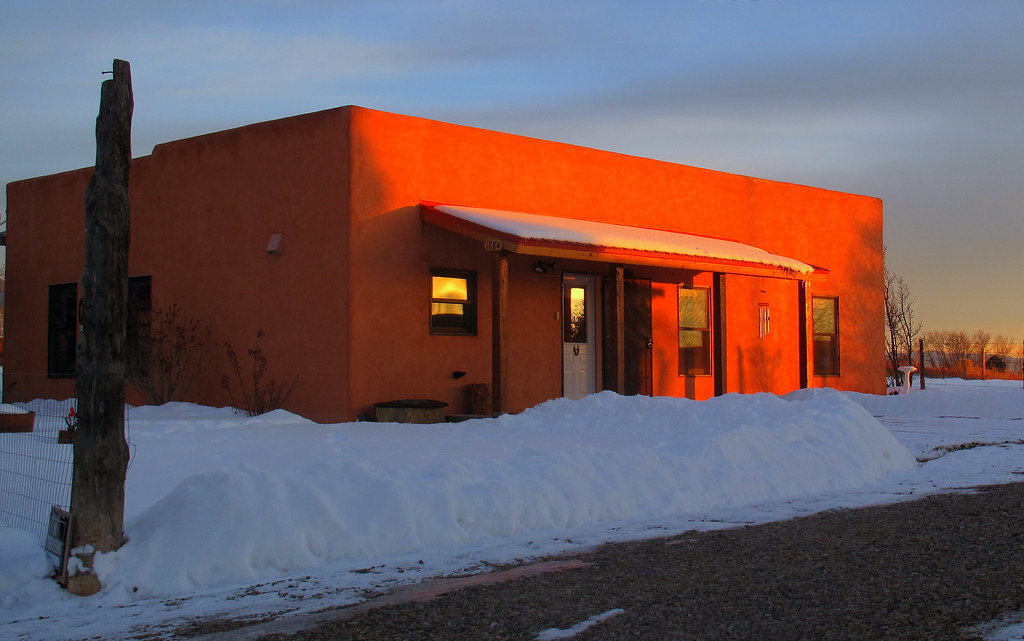#blinkagain
Explore tagged Tumblr posts
Video
PARROCCHIA SAN CRISOGONO - (5.000x14.000 pixel) da Annalisa Giuseppetti Tramite Flickr: Storia L’edificio non sembra di origine cristiana e può attribuirsi ai primordi del secolo IV. La nuova basilica è stata costruita sull’antica dal Card. Giovanni da Crema nel 1123. Il Card. Scipione Borghese la ampliò e la restaurò nel 1625 dandole l’aspetto che attualmente presenta. La parrocchia vi fu eretta, secondo una lapide vicina alla sacrestia, nel 1127, ma risale certamente a prima della metà del secolo V: i suoi presbiteri infatti si trovano tra i sottoscrittori dei sinodi romani del 499 e del 595. Il papa Gregorio III (731-741), come narra il "Liber pontificalis", vi instituì un monastero che mantenne distinto dal "titulus", i cui presbiteri erano addetti alla cura d’anime. Il Card. Giovanni da Crema, come dalle due lapidi vicine all’ingresso della sacrestia, vi costruì nel 1128 un oratorio con chiostro (V. Forcella, "Iscrizioni", iII, 169 nn. 486-487). Calisto II, il 17 aprile 1121, ed Innocenzo III, il 23 luglio 1199, intervennero per risolvere i problemi di amministrazione parrocchiale di S. Salvatore della Corte nei confronti di quelli di S. Crisogono. Innocenzo III sostituì i monaci con i Canonici regolari del Salvatore i quali vi rimasero fino al 1480 quando Sisto IV affidò la parrocchia ai Carmelitani. Pio IX, il 1 giugno 1847, insediò nella basilica i Trinitari, i quali tuttora l’amministrano. Lo stato attuale architettonico si deve al card. Scipione Caffarelli Borghese, nipote di Paolo V che lo commise a Giovanni Battista Soria (1581- 1651). Nell’abside, Madonna con il Bambino tra i santi Crisogono e Giacomo, mosaico della scuola di Pietro Cavallini (c. 1290). La proprietà, per la legge del 19 giugno 1873 n. 1402 è passata al demanio del Regno d’Italia. NOTIZIE: PARROCCHIA SAN CRISOGONO Basilica Minore Piazza Sonnino 44 - 00153 ROMA Settore Centro - Prefettura III - Rione Trastevere - 1º Municipio Affidata a: Ordine della Santissima Trinità (Trinitari) (O.SS.T.) ___________________________________________________________________________ History The building does not seem to Christian origin can be attributed to the beginning of the fourth century. The new basilica was built on the Cardinal Giovanni by Cream in 1123. Cardinal Scipione Borghese enlarged and restored it in 1625 giving the appearance of which is at present. The parish was erected, according to a plaque close to the sacristy, in 1127, but it certainly dates from the first half of the century V: her priests are in fact among the subscribers of the Roman synods of 499 and 595. Pope Gregory III (731-741), as recounted in the "Liber pontificalis" we instituted a monastery that kept distinct from the "titulus", whose priests were involved in the care of souls. Cardinal John of Crema, as the two tombstones nearby the entrance to the sacristy, built there in 1128 a chapel with cloister (V. Fork, "Subscriptions", III, 169 nn. 486-487). Calisto II, April 17, 1121, and Innocent III, July 23, 1199, intervened to solve the problems of administration Parish Church of St. Savior of the Court in relation to those of S. Krševan. Innocent III replaced the monks with the Canons Regular of the Savior which you remained until 1480 when Pope Sixtus IV entrusted the parish to the Carmelites. Pius IX, June 1, 1847, settled in the basilica, the Trinitarians, who still administer it. The current state of architecture is due to the card. Scipione Caffarelli Borghese, nephew Paul V, who committed it to Giovanni Battista Soria (1581-1651). In the apse, Madonna and Child with Saints James and Grisogono, mosaic of the school of Pietro Cavallini (c. 1290). The property, by the law of 19 June 1873 no. 1402 has gone to the State the Kingdom of Italy. NEWS: PARISH SAN CRISOGONO Minor Basilica Piazza Sonnino 44-00153 ROMA Central Sector - Prefecture III - Trastevere district - 1st Hall Entrusted to: Ordine della Santissima Trinità (Trinitari) (O.SS.T.)
#ROMA#SAN CRISOGONO#CHIESE#CHIESA#PARROCCHIA#TRASTEVERE#PIAZZA SONNINO#ORDINE SANTISSIMA TRINITA'#blinkagain#flickr
2 notes
·
View notes
Video
colors of winter by joan gordon Via Flickr: I love new mexico at Sunset note the frozen birdbath...
1 note
·
View note
Photo

Pechiazul by Alejiga (Alejandro Jimenez) https://flic.kr/p/bAKgLa
10 notes
·
View notes
Video
19 notes
·
View notes
Video
Hogwarts by Beth Ann
#Hogwarts Harry Potter Orlando FL Halloween blinkagain#Explored#bestofblinkwinners#blinkagain#blinkspooktacular#PlatinumHeartAward#bestofblink#Canon EOS T1i#Canon EOS 500D#silhouette#flutterbye216
2 notes
·
View notes
Video
<strong>Versailles - Loggiato che porta alla Galleria delle Battaglie <a href="https://www.flickr.com/photos/giannipiludu/">by Gianni S. Piludu</a></strong> <br /><i>Via Flickr:</i> <br />La reggia di Versailles (in francese château de Versailles) è un'antica residenza reale. La città di Versailles, nata dalla scelta di questo luogo da parte del giovane Luigi XIV.
La scelta era dettata dalla prudenza: per allontanarsi dalla capitale e dai suoi cittadini, temuti e considerati difficili da tenere sotto controllo, dopo l'episodio della Fronda. Versailles costituisce oggi un comune autonomo situato nell'attuale dipartimento delle Yvelines, in Francia.
#canon 7d#15-85 is usm#Reggia di Versailles#château de Versailles#my_gear_and_me#my_gear_and_me_bronze#my_gear_and_me_premium#my_gear_and_me_silver#my_gear_and_me_gold#blink#again#found#second#chance#thread#bestofblinkwinners#blinkagain
1 note
·
View note
Photo

Desert Bloom 2 by jbarc in BC These cactuses only flower for about 1-2 days a year. https://flic.kr/p/ed4ePZ
80 notes
·
View notes
Video
Gunung Bromo by Filippo Bianchi Via Flickr: View taken from Gunung Penanjakan Volcano sunrise time at 6 h am: the Bromo is in left back and the Batok is in front of this photo. The Semeru volcano is in back far, the highest.
#bromo#gunung#mount#mountain#montagna#volcano#vulcano#Indonesia#sunrise#morning#alba#Fil.ippo#Filippo Bianchi#Nikon#D7000#batok#semeru#Blinkagain#Bestofblinkwinners#blinksuperstars#bestofsuperstars#Blink4Gallery#my_gear_and_me#my_gear_and_me_premium#my_gear_and_me_bronze#my_gear_and_me_silver#my_gear_and_me_gold#my_gear_and_me_platinum#my_gear_and_me_diamond#FlickrDiamond
1 note
·
View note
Video
Pony by H. Eisenreich Via Flickr: Pony vorm Hintergrund des Wilden Kaisers in Tirol _______________________________________________ Please view my flickr photos on FLUIDR! or FLICKRIVER! _______________________________________________ _______________________________________________________________ this is one of my latest chosen Getty Images! [interested in my Getty Image Set?]
#pony#pferd#horse#wilder#kaiser#alpen#alps#tirol#tyrol#astberg#blinkagain#ponies#hans#eisenreich#poststrasse#schmidmühlen#kaisergebirge#heike#ic#eijomian#foto#fotografie#reise#landschaft#reisefoto#reisefotografie#landschftsfoto#landschaftsfotografie#getty#getty image
2 notes
·
View notes
Video
Luna's View 相片擁有者 Stinnie
#Cat#Oriental shorthair#Portrait#eyes#animals#pict by Stinnie#Konica-Minolta-DIMAGE#**Heart#Awards**#blinkagain#Portraits#!Photo-Hobby! Level 1#Heart Awards#Kittens#pets#Our Pets
3 notes
·
View notes
Photo

"LION-looking" caterpillar by FastBlueSnail https://flic.kr/p/hg1y8y
3 notes
·
View notes
Video
Exhausted Landscape por Andrew Fawcett Por Flickr: Sky reflected in a well-pimped tailpipe
#Cars Exhaust Car Motor Tailpipe Sky Chrome Grass Abstract Detail Horizon Distorted#Classic#blinkagain#D700
1 note
·
View note
Video
Sunlit Woodland Glade by PapaPiper Via Flickr: Autumnal pictures from that part of the Costwold Way between Wotton-under-edge and North Nibley (Gloucestershire)
#Autumn#Woodland#Gloucestershire#Cotswold Way#blinkagain#Bestofblinkwinners#Remember That Moment Level 1#Remember That Moment Level 2#blinksuperstars#bestofsuperstars#blink4gallery
57 notes
·
View notes
Video
Greens In Britanny by Marie Jestin Via Flickr: ✿✿✿✿✿✿✿✿✿✿✿
#blinkagain#breizh#bretagne#breton#brittany#cheval#finistère#foal#france#hongre#horse#jument#mare#natura#nature#postier#poulain#trait#landscape#chevaux#sky#supershot#wildlive#thegalaxy#specanimal#rememberthatmomentlevel1#simplysuperb#chevalbreton#drafthorse#animals
6 notes
·
View notes
Photo

21-208 by lechecce Lost in translation...... https://flic.kr/p/2m58Wsk
0 notes
Photo

Desert Bloom 2 by jbarc in BC These cactuses only flower for about 1-2 days a year. https://flic.kr/p/ed4ePZ
9 notes
·
View notes

